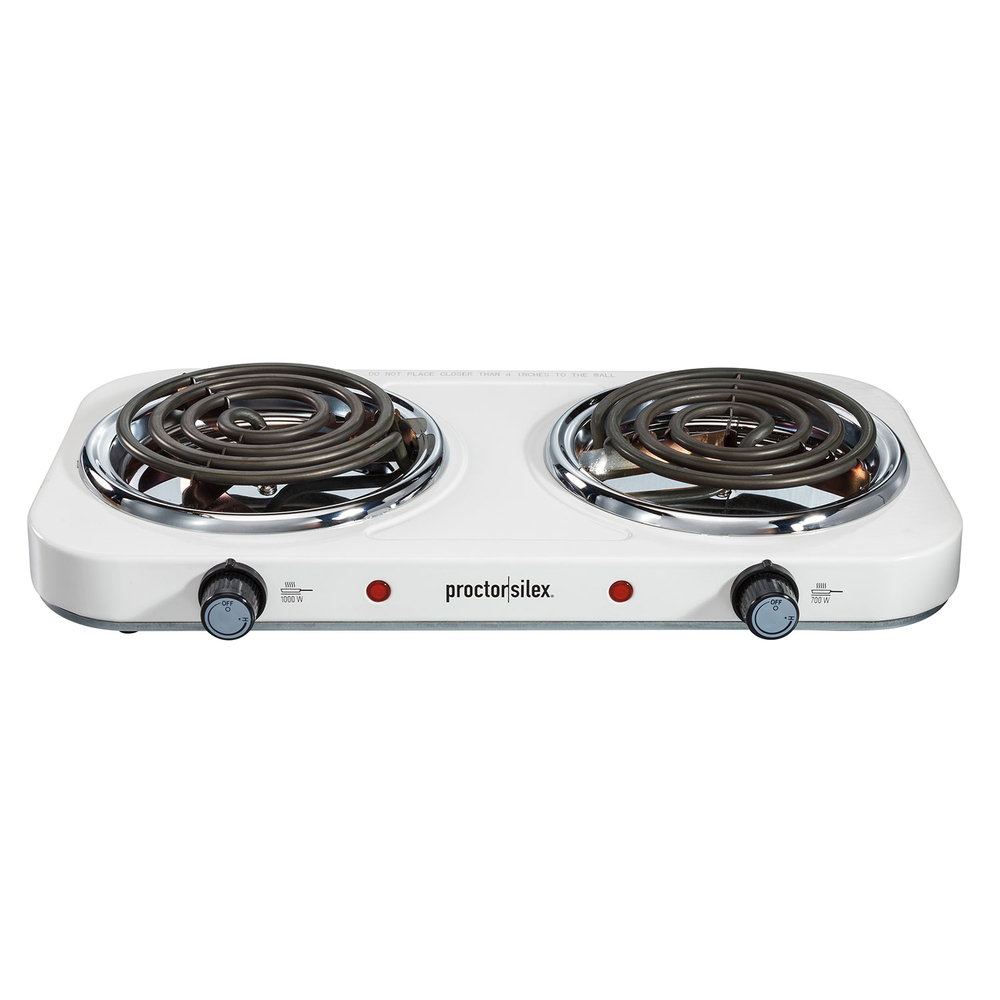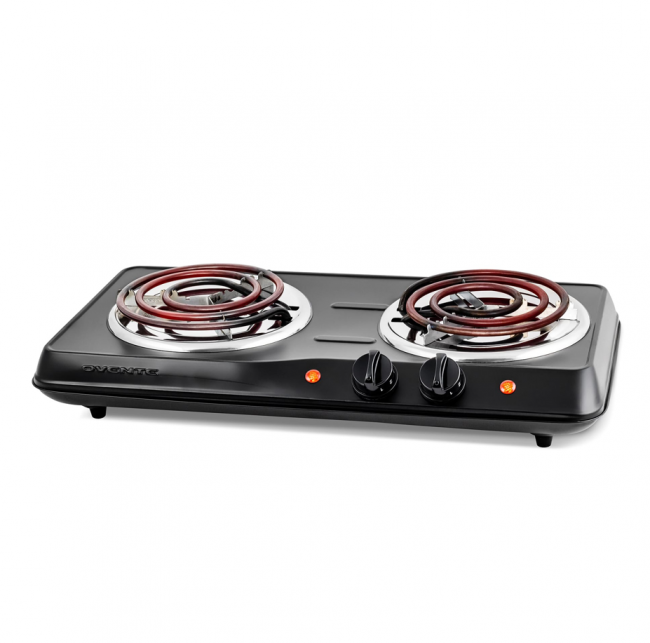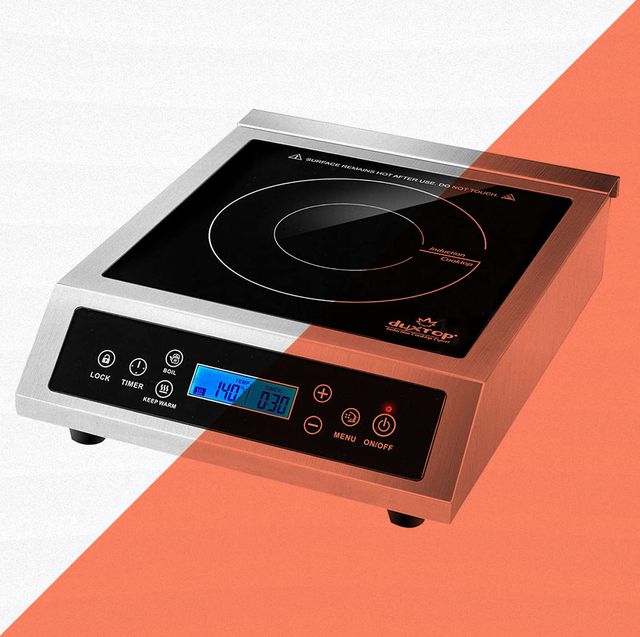I. Introduction to Electric Burners: Unveiling a Culinary Essential
Electric burners have become a cornerstone of modern kitchens, offering a convenient and versatile solution for cooking. Unlike their gas-powered counterparts, electric burners are lauded for their clean operation, precise temperature control, and ease of use. Whether you’re a seasoned chef or a college student venturing into the culinary world for the first time, electric burners provide a reliable and efficient cooking platform.

II. Unveiling the Types of Electric Burners: Understanding Your Options
The world of electric burners offers a variety of choices to suit your cooking style and budget. Here, we delve into the three most common types:
- Solid Coil Burners: The Reliable Workhorse
Solid coil burners are the classic choice, known for their durability and affordability. These burners consist of a metal coil that heats up when electricity passes through it. They offer consistent heat distribution, making them ideal for everyday cooking tasks like boiling water or simmering sauces.
- Radiant Burners: Speed and Precision for Modern Kitchens
Radiant burners are a more modern option, featuring a smooth glass surface with heating elements beneath. They heat up quickly and offer precise temperature control through knobs or digital displays. The smooth surface makes them easy to clean and adds a sleek aesthetic to your kitchen countertop.
- Induction Burners: The Cutting-Edge Choice for Energy Efficiency
Induction burners are the most advanced option, utilizing magnetic fields to directly heat compatible cookware. This translates to incredibly fast heating times and exceptional energy efficiency. However, induction burners require cookware made of specific metals, such as cast iron or stainless steel with a magnetic base, which can be an additional investment.

III. Selecting the Perfect Electric Burner: A Guide to Informed Choices
Choosing the right electric burner depends on several factors, ensuring you get the most out of your investment. Here’s what to consider:
- Considering Cooking Habits: Matching Needs to Features
First, reflect on your cooking habits. Do you frequently prepare elaborate meals requiring multiple burners? Or do you primarily need a single burner for occasional cooking tasks? If you have limited counter space, a single-burner option might be ideal. Conversely, if you often cook elaborate meals, a double burner would provide more flexibility.
- Evaluating Power Output: Ensuring Adequate Heat for Your Needs
Electric burners come in various wattages, which determine their heating power. Higher wattage burners heat up faster and reach higher temperatures, making them suitable for tasks like searing steaks or stir-frying. Lower wattage burners are sufficient for simmering sauces or boiling water.
- Additional Features: Enhancing Your Cooking Experience
Several additional features can elevate your electric burner experience. Consider options like timers that automatically shut off the burner, a keep-warm function for maintaining food temperature, and child safety locks for added peace of mind.

IV. Mastering the Art of Electric Burner Cooking: Essential Techniques
Electric burners offer precise temperature control, unlocking a world of culinary possibilities. Here are some essential techniques to master:
- Temperature Control: Achieving Culinary Perfection
Unlike gas burners where heat intensity is gauged by flame size, electric burners offer precise temperature settings. Utilize this feature to your advantage. Low settings are ideal for simmering delicate sauces, while high heat is perfect for searing steaks or stir-frying vegetables.
- Using Proper Cookware: Ensuring Even Heat Distribution
For optimal performance, choose cookware with a flat base that makes good contact with the burner surface. Opt for materials like stainless steel or cast iron, which distribute heat evenly and can withstand high temperatures. Avoid using cookware with a warped base, as it can cause uneven heating and hot spots.
- Cleaning and Maintenance: Ensuring Longevity and Optimal Performance
Regular cleaning is crucial for maintaining the performance and lifespan of your electric burner. Once the burner cools down, wipe the surface with a damp cloth and a mild cleaning solution. Avoid using abrasive scrubbers that can scratch the surface. For radiant cooktops, a glass cleaner can be used to ensure a sparkling finish.

V. Safety Precautions for Electric Burners: Prioritizing a Safe Cooking Environment
While electric burners are generally safe appliances, it’s essential to prioritize safety in the kitchen. Here are some key precautions to remember:
- Preventing Accidents: Handling Electric Burners with Care
Always keep the electric burner cord away from heat sources and avoid overloading electrical outlets. Never touch the burner surface while it’s hot, and use pot holders when handling cookware. Keep children and pets away from the cooking area to prevent burns.
- Understanding Electrical Safety: Avoiding Hazards and Ensuring Proper Usage
Ensure your electric burner is plugged into a grounded outlet with the correct voltage. Inspect the power cord regularly for any damage or fraying. If you notice any electrical issues, discontinue use and consult a qualified electrician.
- Maintaining a Clean Cooking Area:
Keep the cooking area around your electric burner clear of flammable materials like towels, oven mitts, or dishcloths. Regularly clean up spills to prevent them from igniting. Never leave a hot burner unattended, especially when cooking with oil or flammable liquids.

-
VI. Electric Burners Beyond the Basics: Exploring Advanced Features and Techniques
Electric burners aren’t just for boiling water and simmering sauces. Here’s how to unlock their full potential:
- Simmering and Slow Cooking: Mastering Low-Heat Techniques
The precise temperature control of electric burners makes them ideal for slow cooking and simmering. Set the burner to low heat and use a lid to trap heat and moisture. This technique is perfect for creating flavorful stews, braises, and risottos.
- Sautéing and Stir-Frying: Mastering High-Heat Techniques
Electric burners can also handle high-heat cooking tasks. Utilize the higher wattage settings to quickly sear meat or stir-fry vegetables. A preheated burner and a good amount of oil ensure even cooking and prevent sticking.
- Grilling and Broiling: Unveiling the Versatility of Electric Burner Attachments
Many electric burners offer optional griddle or grill attachments. These attachments allow you to sear steaks, grill vegetables, or even cook delicate fish with minimal smoke. Consult your user manual for proper usage and cleaning instructions for these attachments.
VII. Electric Burners and Energy Efficiency: Cooking Responsibly
In today’s environmentally conscious world, choosing energy-efficient appliances is crucial. Electric burners generally consume less energy than their gas counterparts. Here’s how to maximize their efficiency:
- Understanding Energy Consumption: Making Informed Choices
When purchasing an electric burner, consider its wattage rating. While higher wattage burners offer faster heating, they also consume more energy. Choose a burner with enough power for your needs without exceeding them.
- Adopting Eco-Friendly Cooking Practices: Reducing Energy Consumption
Several practices can further reduce energy consumption while using electric burners. Match the burner size to your cookware for optimal heat transfer. Use lids whenever possible to trap heat and moisture, reducing cooking time and energy usage. Additionally, turn off the burner a few minutes before your food finishes cooking, as the residual heat will continue the cooking process.
- Sustainable Cooking: Minimizing Environmental Impact
Sustainable cooking goes beyond energy efficiency. Consider incorporating local and seasonal ingredients into your meals to reduce transportation emissions. Composting food scraps and recycling packaging materials are additional ways to minimize your environmental footprint in the kitchen.

-
VIII. Electric Burners in Different Culinary Settings: A Global Perspective
The versatility and convenience of electric burners extend beyond home kitchens. Let’s explore their diverse applications:
- Electric Burners in Home Kitchens: A Culinary Staple
Electric burners are a ubiquitous presence in home kitchens worldwide. They offer a compact and convenient solution for those with limited counter space or those who prefer electric cooking for its clean operation and precise temperature control.
- Electric Burners in Commercial Kitchens: Versatility and Efficiency
Electric burners also play a role in professional kitchens. They are often used for specific tasks like simmering sauces, holding cooked dishes warm, or providing additional cooking space during peak times. Their compact size and energy efficiency make them a valuable asset in busy commercial kitchens.
- Electric Burners for Camping and Outdoor Cooking: Portability and Convenience
Portable electric burners offer a convenient solution for outdoor cooking. They are ideal for camping trips, picnics, or tailgating events. These portable burners are lightweight and versatile, allowing you to prepare hot meals wherever your adventures take you.
IX. Conclusion: Electric Burners – A Reliable Partner in the Kitchen
Electric burners have carved a niche in modern kitchens, offering a reliable, convenient, and energy-efficient solution for cooking. Whether you’re a seasoned chef or a novice cook, electric burners provide the versatility and control to explore a world of culinary possibilities. With a bit of practice and the right techniques, you can unlock the full potential of your electric burner and create delicious meals in a safe and sustainable way. So, the next time you’re in the kitchen, consider the humble electric burner – a versatile and reliable partner in your culinary journey.